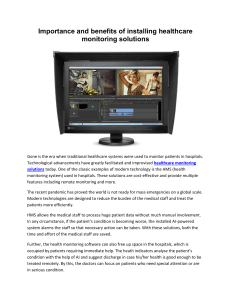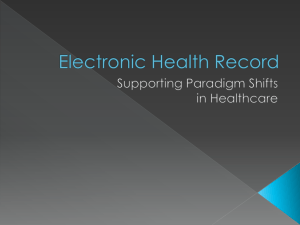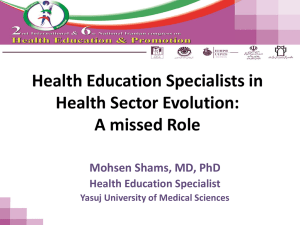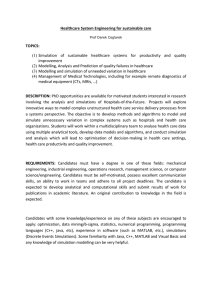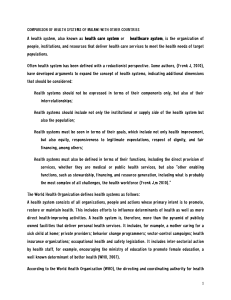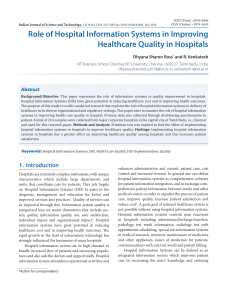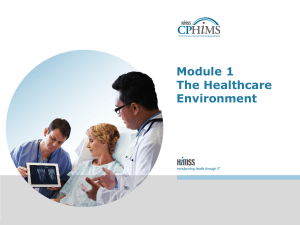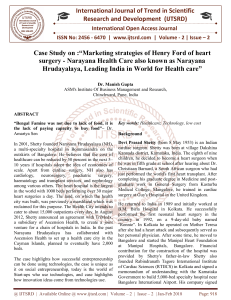This Hospital Computer Can Predict the Future What happens when
advertisement
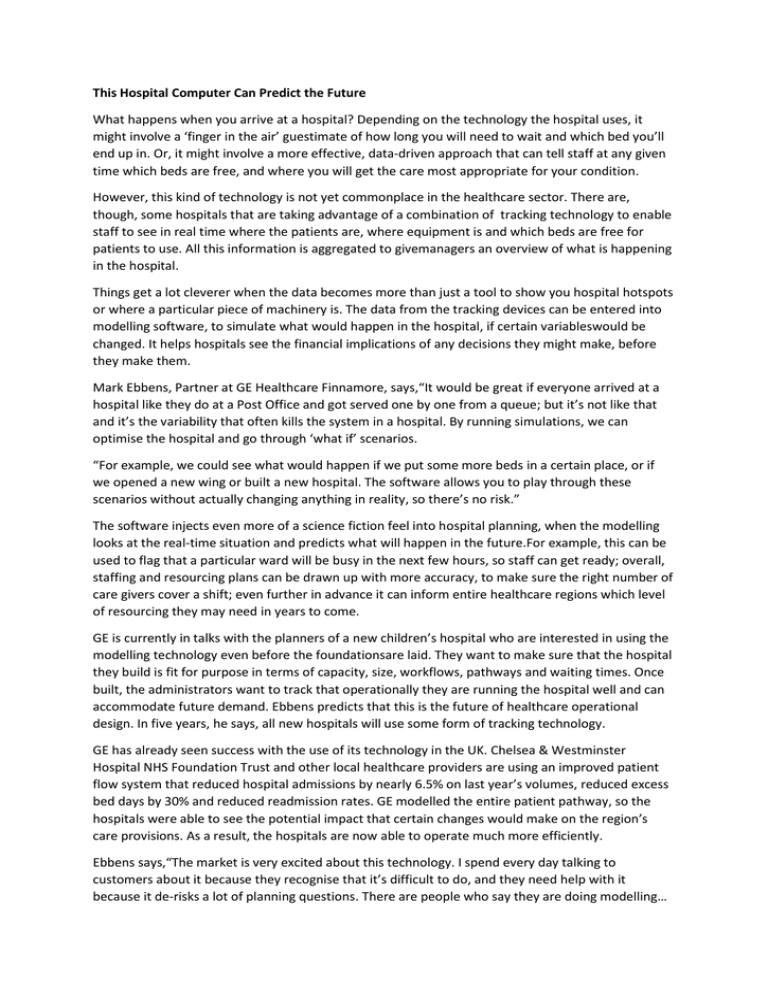
This Hospital Computer Can Predict the Future What happens when you arrive at a hospital? Depending on the technology the hospital uses, it might involve a ‘finger in the air’ guestimate of how long you will need to wait and which bed you’ll end up in. Or, it might involve a more effective, data-driven approach that can tell staff at any given time which beds are free, and where you will get the care most appropriate for your condition. However, this kind of technology is not yet commonplace in the healthcare sector. There are, though, some hospitals that are taking advantage of a combination of tracking technology to enable staff to see in real time where the patients are, where equipment is and which beds are free for patients to use. All this information is aggregated to givemanagers an overview of what is happening in the hospital. Things get a lot cleverer when the data becomes more than just a tool to show you hospital hotspots or where a particular piece of machinery is. The data from the tracking devices can be entered into modelling software, to simulate what would happen in the hospital, if certain variableswould be changed. It helps hospitals see the financial implications of any decisions they might make, before they make them. Mark Ebbens, Partner at GE Healthcare Finnamore, says,“It would be great if everyone arrived at a hospital like they do at a Post Office and got served one by one from a queue; but it’s not like that and it’s the variability that often kills the system in a hospital. By running simulations, we can optimise the hospital and go through ‘what if’ scenarios. “For example, we could see what would happen if we put some more beds in a certain place, or if we opened a new wing or built a new hospital. The software allows you to play through these scenarios without actually changing anything in reality, so there’s no risk.” The software injects even more of a science fiction feel into hospital planning, when the modelling looks at the real-time situation and predicts what will happen in the future.For example, this can be used to flag that a particular ward will be busy in the next few hours, so staff can get ready; overall, staffing and resourcing plans can be drawn up with more accuracy, to make sure the right number of care givers cover a shift; even further in advance it can inform entire healthcare regions which level of resourcing they may need in years to come. GE is currently in talks with the planners of a new children’s hospital who are interested in using the modelling technology even before the foundationsare laid. They want to make sure that the hospital they build is fit for purpose in terms of capacity, size, workflows, pathways and waiting times. Once built, the administrators want to track that operationally they are running the hospital well and can accommodate future demand. Ebbens predicts that this is the future of healthcare operational design. In five years, he says, all new hospitals will use some form of tracking technology. GE has already seen success with the use of its technology in the UK. Chelsea & Westminster Hospital NHS Foundation Trust and other local healthcare providers are using an improved patient flow system that reduced hospital admissions by nearly 6.5% on last year’s volumes, reduced excess bed days by 30% and reduced readmission rates. GE modelled the entire patient pathway, so the hospitals were able to see the potential impact that certain changes would make on the region’s care provisions. As a result, the hospitals are now able to operate much more efficiently. Ebbens says,“The market is very excited about this technology. I spend every day talking to customers about it because they recognise that it’s difficult to do, and they need help with it because it de-risks a lot of planning questions. There are people who say they are doing modelling… however to do it on an industrial scale that is quick, robust, gives you the answers and can be relied upon, our ‘hospital of the future’ software is hard to beat. In terms of tracking, it’s really interesting to see patients moving around on the screen, but it’s without value unless you can use the information to make decisions.”
